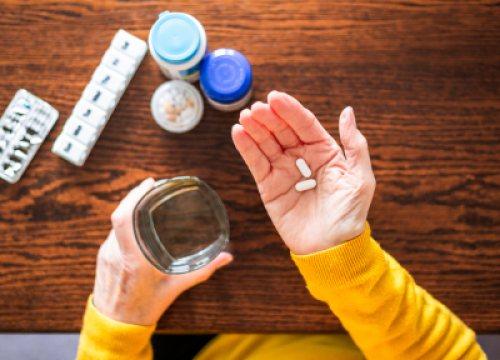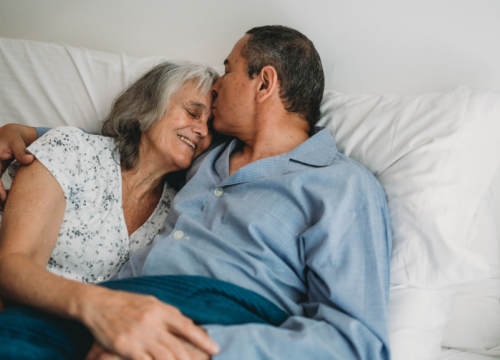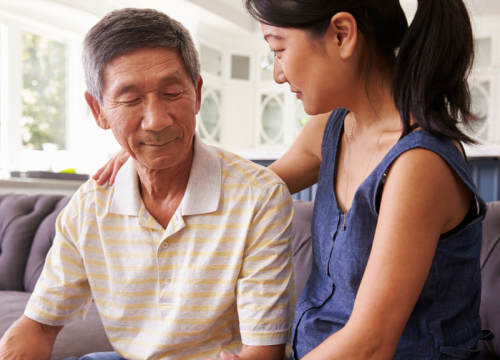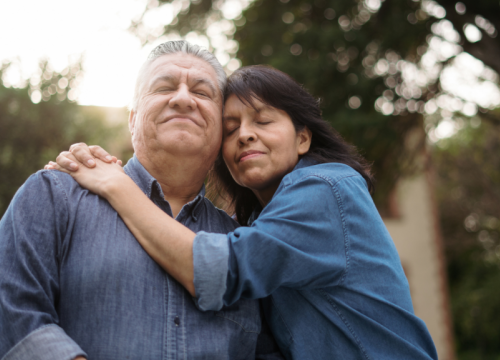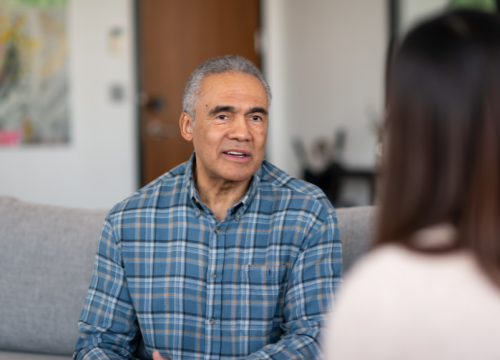Pain in Parkinson's Disease
If you live with Parkinson’s disease (PD) and experience pain, you are not alone. Chronic pain is twice as common among people with PD as it is in people without it. In fact, more than 80 percent of people with PD report experiencing pain and many say it’s their most troubling non-motor symptom. Fortunately, there are many ways to manage pain in PD. As with other aspects of the disease, there’s no one-size-fits-all approach. The first step is to work with your healthcare team to understand what’s causing the pain and then work together to find the best treatment plan for you.
What Kinds of Pain Can Be Part of Parkinson’s?
At its simplest, pain means the body hurts. When a person feels pain, nerves in the skin, joints and organs alert the brain to the location of an injury. Researchers have found that in early PD, there are already changes in the way that the body detects and regulates pain. Pain is complex and can take many forms. In PD, pain tends to affect the side of the body where motor symptoms first appeared. If your PD started with a tremor in the right hand, you’re more likely to develop pain in the right shoulder, wrist or fingers. Here are a few common types.
Musculoskeletal pain
Musculoskeletal pain is experienced by up to 75 percent of people with PD and includes pain in the muscles, bones or skeleton. It is related to rigidity and decreased movement, and to arthritis. Many people with PD experience muscle cramps and tightness in the neck, spine and arms. Muscles may feel stiff or achy. Joint pain, especially in one shoulder, is also common. It’s not uncommon for people with PD to be diagnosed with frozen shoulder or rotator cuff problems, and even undergo surgery.
Dystonic pain
Do you have painful curling of your foot, toes or hands? This is dystonia, a painful muscle spasm. Up to 50 percent of people with PD experience this at some stage of the disease. Foot dystonia is one of the most common sources of dystonic pain in early PD. Severe, painful spasms also can occur in the neck, face or throat muscles. Dystonia may occur spontaneously or may be triggered by certain movements, but is very often experienced in the early morning. It can also be related to fluctuations in PD medications. Report dystonia to your doctor for evaluation or recommendations.
Neuropathic pain
Also called radicular pain, neuropathic pain occurs when a nerve is crushed or inflamed. Between five and 30 percent of people with PD experience neuropathic pain. It feels sharp, electric, tingling or like coolness or numbness. In people with PD, changes in posture, as well as dystonia, can cause nerves to be crushed. A common type is sciatica - lower back pain that extends down one leg. People with PD may also experience peripheral neuropathy - injury to nerve endings that begins with numbness in the toes or fingertips.
Central pain
Central pain affects about 10 percent of people with PD at some point. It can be difficult to describe but may include a vague, constant boring sensation; abdominal pain, reflux, shortness of breath or feeling flushed; painful sensations around the mouth, genital or rectal areas or simply “pain all over.”
Treating Pain
How can you make a specialized plan for your PD pain? Build a team that includes a PD doctor, nurse, physical therapist, occupational therapist, pain management specialist and in some cases, an orthopedic specialist.
Optimize PD Medications
It’s critical to ensure your PD medications are working optimally. Your doctor may want to examine you immediately before and after you take PD medications. To increase, decrease or change your medication to extend its effectiveness.
Exercise and Physical Therapy
Exercise is beneficial, particularly for musculoskeletal pain, but it can be a catch-22. It may be difficult to exercise when you’re in pain, but if you’re in pain and you stop moving, it gets worse! A physical therapist can recommend exercises or techniques to target the source of your pain. For example, if you experience neuropathic pain, the physical therapist can help improve your posture, which may alleviate pain.
Other Medications
Your doctor can prescribe medications that target specific sources of pain. For example, muscle relaxants can help dystonia, as can deep brain stimulation (DBS) and botulinum toxin (Botox®). Medications for epilepsy and depression, such as gabapentin (Neurontin®) or nortriptyline (Pamelor®) may be helpful for neuropathic and central pain. Anti-inflammatory medications like ibuprofen may ease musculoskeletal pain.
Treat Depression and Other Health Conditions
Chronic pain and depression are intertwined. If a person experiences depression, it may worsen pain and other PD symptoms. In addition, people who are depressed have a hard time taking medications properly, and this sets a vicious cycle in motion: with missed doses, medications don’t work well, and a person feels worse. Treating depression is essential for managing pain. It’s also important to treat other health conditions, such as osteoporosis or diabetes, that impact pain.
Self-Management for Pain
If pain begins suddenly or an injury occurs, it is considered acute, especially if there is swelling or bruising. Apply cold packs for 15-10 minutes several times daily for the first 48-72 hours. Elevate the area to decrease swelling.
If pain is long lasting (chronic), apply heat to the area for 15-20 minutes. Purchase a microwaveable hot pack that conforms to the area (or make your own with rice in a tube sock knotted at the opening). Heat pack according to directions; heat rice-filled sock for approximately two minutes in microwave.
If muscles feel tense or “knotted,” try self massage. Apply pressure to the area with a tennis ball, using your body weight against it for deeper pressure. Knobby plastic massage tools or a Theracane can be used to get better leverage on hard-to-reach areas. An appointment with a massage therapist may also be helpful.
Involving Your Team
When pain lasts longer than two weeks, interferes with sleep, or intensifies, it’s time to involve your team. Keep track of WHEN the pain started, WHERE it hurts, HOW long it lasts and WHAT it feels like (achy, sharp). It will be useful to also track when the pain starts in relation to when you take your medication. This information will help your healthcare team work more efficiently with you in designing a treatment plan.
Road to Recovery
Pain in PD is often overlooked and can have a significant impact on quality of life. The good news is that it can be managed. Tell your doctor about your pain so you can figure out what kind it is and find the best solutions for it. Once a cause is determined, you and your team can choose therapies that best fit your individual needs so you can feel your best.
Related Materials
My Parent Has Parkinson's. What Does It Mean?
Managing "Off" Time in Parkinson's
Medications for Non-motor Symptoms
Related Blog Posts

A Beginner's Guide to Managing Pain Through Mindfulness
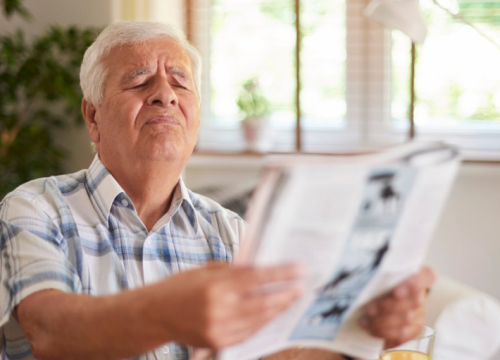
Non-motor Symptoms: What’s New? Part 1


